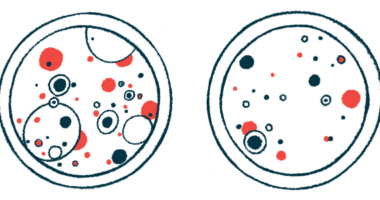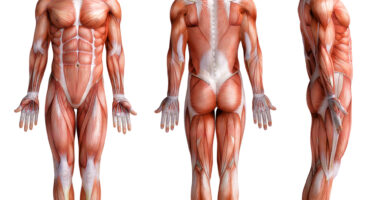First oculopharyngeal MD patient sees better swallowing with BB-301
Benitec Biopharma is testing 3 doses of gene therapy in Phase 1b study

Treatment with the gene therapy BB-301 led to improved swallowing for the first person with oculopharyngeal muscular dystrophy (OPMD) to receive the treatment as part of an ongoing clinical trial, according to new interim data from BB-301’s developer Benitec Biopharma.
“We are pleased to report continued positive interim clinical study data for Subject 1 in the investigational assessments deemed to be most critical for the evaluation of clinical benefit by the [key opinion leaders] in the fields of OPMD research and patient care,” Jerel A. Banks, MD, PhD, Benitec’s executive chairman and CEO, said in a company press release.
OPMD is a form of muscular dystrophy marked by weakness in muscles of the eyelids and throat. Difficulty swallowing is one of the disease’s hallmark symptoms and can result in food or liquid going down the windpipe into the lungs, called aspiration, which can lead to serious problems like pneumonia.
OPMD is caused by mutations in the PABPN1 gene, which leads to an abnormal protein being produced that forms clumps in muscle cells, damaging them. BB-301 uses DNA-directed RNA interference technology for a “silence-and-replace” strategy. The gene therapy is designed to deactivate the mutated PABPN1 gene while providing muscle cells with a functional version of it.
Benitec is running a Phase 1b/2a clinical trial (NCT06185673) to evaluate BB-301’s safety profile and its effect on swallowing. The study’s Phase 1b part is testing three different doses, before the Phase 2a part tests the optimal dose in up to 12 patients.
The study, which is recruiting participants at NYU Lagone Health in New York, is open to patients age 65 or younger who’ve completed at least six months of follow-up as part of a separate natural history study, which tracks disease progression in the absence of treatment.
The U.S. Food and Drug Administration (FDA) gave Benitec the go-ahead to start the trial last year and the first participant was given the lowest tested dose in November. A second participant was dosed in February and a third is expected to be dosed in the coming months, according to Banks.
Gains in swallowing with BB-301
Neither patient dosed so far has had any serious side effects related to the gene therapy. One patient reported moderate gastroesophageal reflux disease (GERD, commonly called acid reflux, or heartburn) that went away with time.
“We remain on track to report additional interim clinical study results (representing at least [six] or 12 months of follow-up for each study subject) on multiple patients in the first quarter of calendar 2025,” Banks said.
The new interim data cover 180 days, or about six months, of follow-up for the first participant. To measure swallowing ability, the researchers tracked total pharyngeal residue, a measure that reflects how much food or liquid is left in the throat after a swallow. A lower amount implies better swallowing ability.
“Facilitating reductions in the quantities of solid food and liquid that remain in the throat post-swallow is believed to be a central indicator of improvement of swallowing and the reduction of the risk of aspiration in subjects suffering from OPMD,” Banks said.
Four different types of foods were assessed — a thin liquid, akin to water; a moderate liquid that’s similar to a smoothie; a thick liquid like yogurt; and solid food.
For moderate, thick liquids, and solid foods, the total pharyngeal residue measured at 180 days was lower than it had been at any point during the natural history study, suggesting the participant’s ability to swallow them was better after gene therapy than before. For the thin liquid, the total pharyngeal residue at 180 days was comparable to the lowest value seen during the natural history study.
Scores on the Sydney Swallow Questionnaire, a standardized measure of patient-reported swallowing ability, were consistently lower at 180 days post-gene therapy than at any point during the natural history study. This suggests the gene therapy improved the patient’s perception of their own swallowing ability, along with objective clinical measurements.







